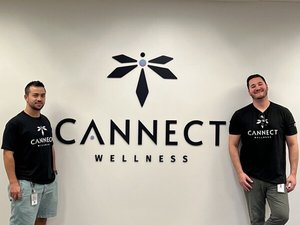Of the last several software companies that went public, all (Okta, Alteryx, Mulesoft, Blackline, Nutanix, Coupa, etc.) were horizontal plays. While we have invested in horizontal plays such as marketing and HR that affect the traditional enterprise, I believe there is still many opportunities in vertical software. Just as a refresher, vertical software is software aimed to address needs of companies within a specific industry. In the following, I will lay out why I am bullish on the category and why I will continue to look to invest in vertical software startups.
Pen & Paper is Still Prevalent
As services such as AWS and Azure become more prevalent, it is sometimes hard to remember that the vast majority of industries are still being built by legacy systems that are decades old. In healthcare and finance, systems are built on languages made in the 50s such as MUMPS and COBOL, which were built in the 50s and are extremely hard to integrate with. Many of these legacy systems do not provide any data to make companies built on top of them more efficient. As a result, in many cases email & excel are still the predominant workflow tools.
There is ample opportunity for vertical software providers to provide increased visibility and and efficiency where it has traditionally not been. Modules and tools such as benchmarking or being able to track KPIs, which seem basic in other software categories, provide immense value to industry companies.
Lower Customer Acquisition Costs
One of the major advantages of vertical software providers is customer acquisition costs are usually lower. Since potential targets are usually very similar to customers, vertical software companies do not need to spend as much on sales and marketing as their horizontal counterparts.
As seen above, operating expenses as a percent of revenue for vertical software companies have been historically 20-30% lower than horizontal software companies. Word of mouth and upsells are much easier in vertical software.
Capital Efficiency
One of the best parts for investors about the vertical software category is the capital efficiency. Capital efficiency is important because it is less dilutive for founders and investors alike. If two companies both sell for a $1b, and Startup A raised $100m and Startup B raised $200m, Startup A all else equal made investors a greater amount of money for existing investors because they were diluted less. Tomasz Tunguz pointed out in his blog post that the median SaaS company takes in $88m to get to IPO. Vertical software players are much more capital efficient than their horizontal counterparts.
Once early traction is established in vertical software, customer acquisitions tend to be much faster and lower because potential targets are more similar to current customers. As such, vertical software do not need to pump more money into sales and marketing which is largely why most horizontal companies need to raise more money.
Once Entrenched, Moat is Bigger than Horizontal
Horizontal software aims to own one part of the value chain. These types of companies try to create products that are good for many different industries whether it is Salesforce or Dropbox. Vertical software aims to address very specific challenges within a specific industry. Many of the challenges that companies in law, construction, insurance, etc. are unique to its own industry and so Salesforce or Box are not as effective in certain instances. Vertical software provides the needs that horizontal plays by building custom integrations for the specific vertical. Veeva started out in CRM just for healthcare on top of Salesforce and added content marketing and other modules such as clinical data management. Once entrenched, vertical software providers are tougher to take out because they own more of the workflow within their vertical than traditional horizontal providers.
Outside of the Valley
Here at Lightbank, we have a strong opinion that great businesses can be built anywhere. Horizontal plays tend to be based in SF and NY where there is a plethora of tech talent to choose from. Vertical plays have more of a need to be closer to industry clients and as such have a greater chance to be based in cities such as Dallas, Nashville, and Cleveland.
Almost all of the companies listed all were outside of proper San Francisco, South Bay or New York City. Granted there still are great vertical software companies being built in those areas, but there is a higher propensity of vertical software companies being built outside of the traditional hubs than their horizontal counterparts.
I believe that there will be many opportunities to invest in vertical software. Though there are risks in investing in vertical software, there will be more large companies to be had in vertical software. If you were a founder tackling problems in vertical software, I would love to chat with you.
Eric Ong is an investor at Lightbank








